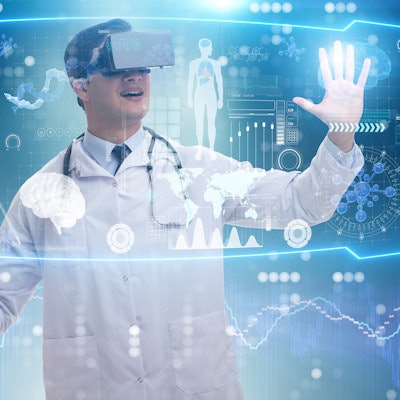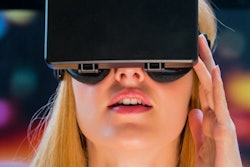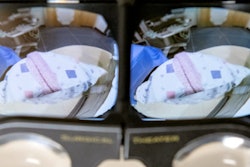
Patients with an abdominal aortic aneurysm (AAA) were more engaged and had a better understanding of their condition after examining 3D models using virtual reality (VR) technology, compared with CT scans or other educational resources, according to an article published online April 19 in the Annals of Vascular Surgery.
Effective consultation is especially important for patients with AAA since they are often required to comply with lifestyle changes, such as smoking cessation, during a period of surveillance before undergoing surgery. Despite the wide availability of informational resources, patient understanding of AAA remains limited -- suggesting the need for new and perhaps more engaging modes of communication between providers and patients, noted co-author Dr. Robert Larson and colleagues from Virginia Commonwealth University School of Medicine.
In recent years, various groups have demonstrated the potential of VR to support medical education and even reduce patient anxiety before receipt of treatment. Following suit, the researchers tested the viability of using VR to help bolster the engagement and education of 19 patients who presented with AAA between September 2017 and January 2018. The average age of the patients was 69 years, and most had no prior experience with VR.
"In VR there are no distractions, and the only object of focus is the educational concept and framework being discussed," the authors wrote. "This directed attention may provide a unique method of communication that other methods such as 3D printing or digital 3D models on computer screens cannot provide."
Larson and colleagues created a virtual 3D model based on the CT data of each of the 19 patients. To generate the 3D models, the researchers imported one representative CT scan from each patient into open-source software (3D Slicer) for segmentation, converted the files into stereolithography (STL) format, and then processed the models using free design software (Meshmixer, Autodesk). The entire model generation process took roughly one hour.
All of the patients participated in a standard-of-care discussion with a physician who explained the relevant anatomy and disease using a variety of educational resources, including the patient's CT scans and booklets. The patients then wore a stereoscopic VR headset (Google Cardboard, Google) connected to a mobile device (iPhone 6, Apple) to view an individually tailored 3D model of their abdominal aorta, after which they discussed treatment options with the physician.
On follow-up surveys, nearly 90% of the patients agreed or strongly agreed that examining the 3D model in VR improved their understanding of their health status. The same percentage of patients also claimed that they felt comfortable using VR and would like to see it applied more often in their future care. In addition, 84% agreed or strongly agreed that VR made them feel more engaged in their healthcare and they enjoyed using the technology.
The patients believed that among all of the educational resources they examined, VR was the most useful (95%), followed by verbal education (63%), CT scans (53%), drawings (42%), and handouts (25%).
Using VR required extra time for each patient encounter and interrupted the standard workflow, but it was much less expensive and more quickly prepared than other advanced image-viewing techniques such as 3D printing, the authors noted. The survey results demonstrated the potential utility of VR as an engaging and beneficial learning tool, and further validation studies could help confirm the extent to which the technology can improve patient knowledge and retention.



















